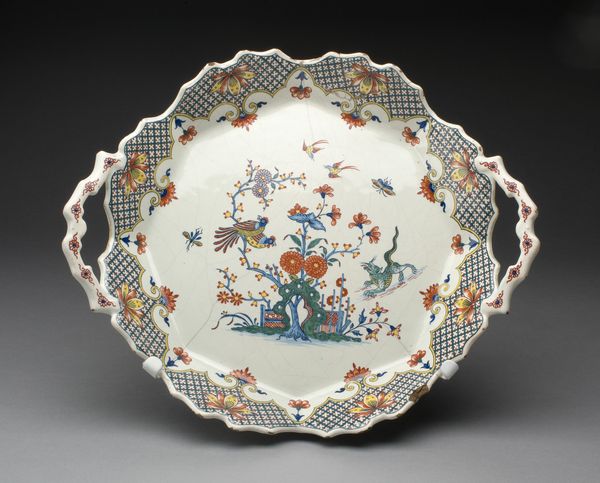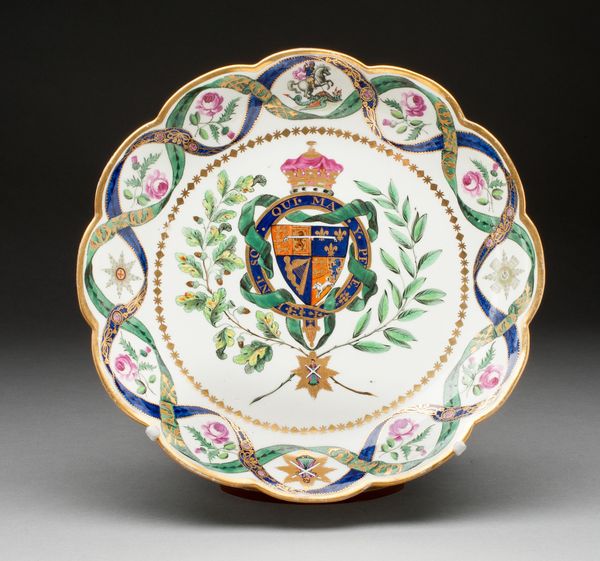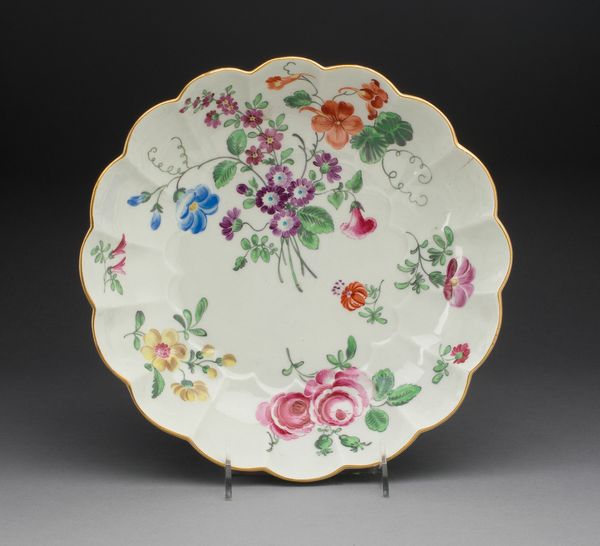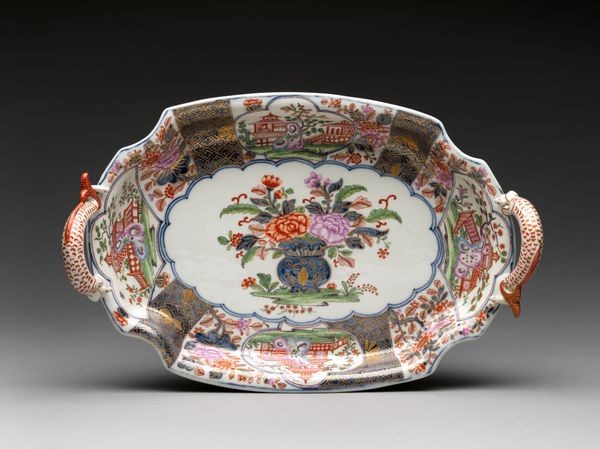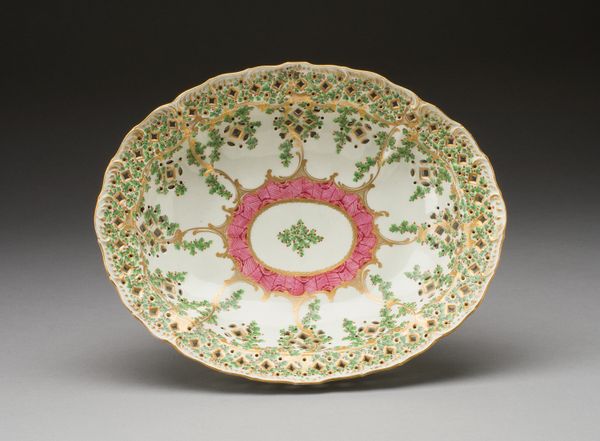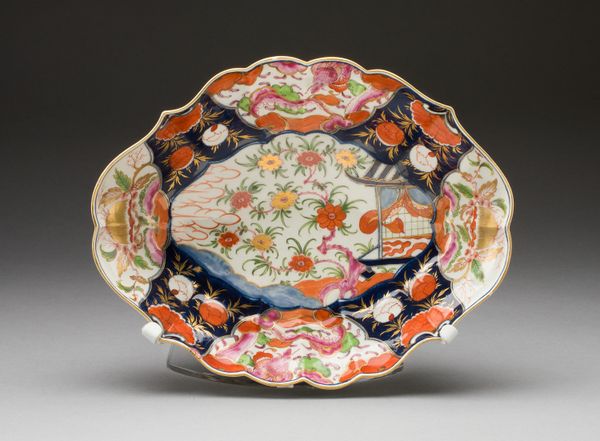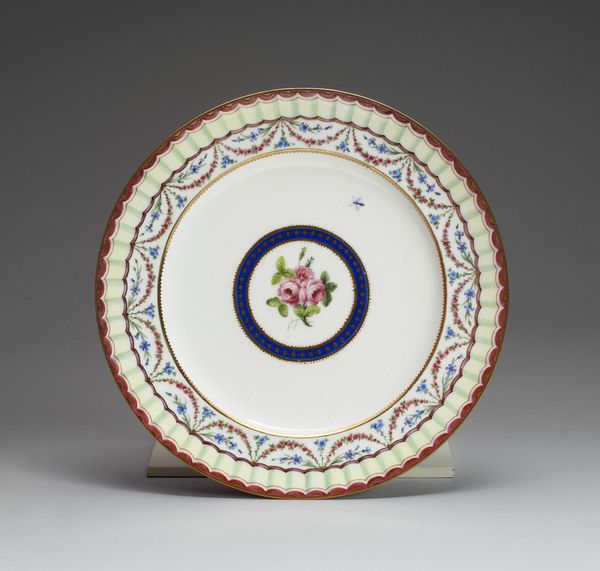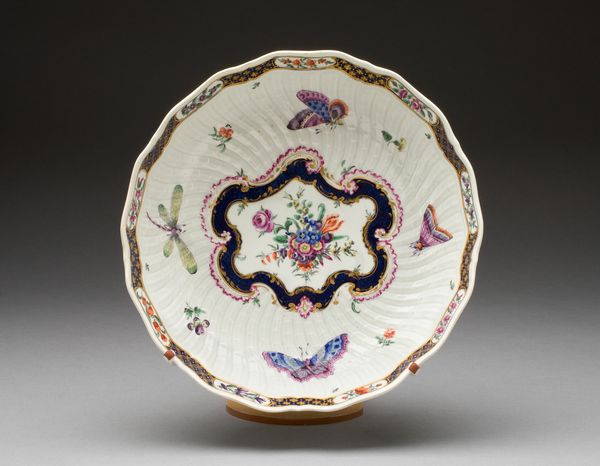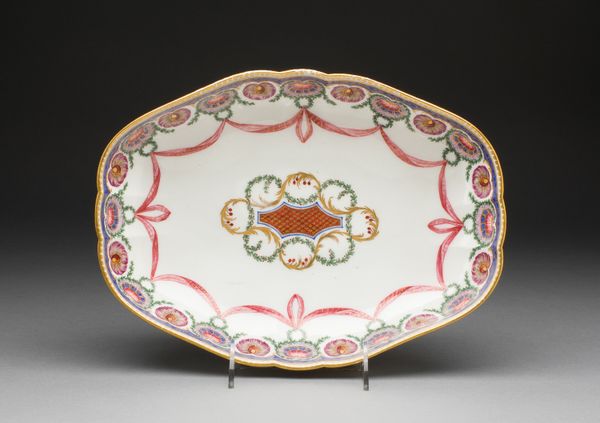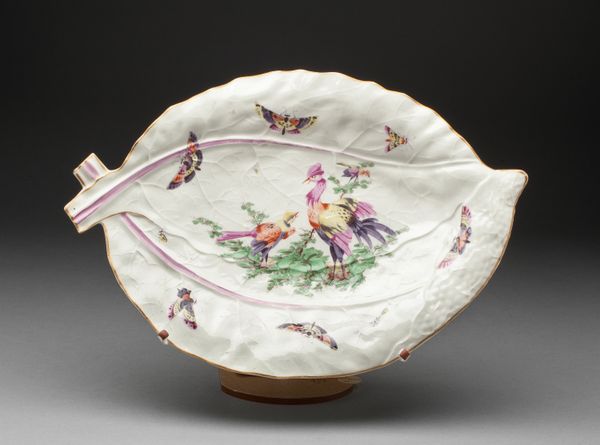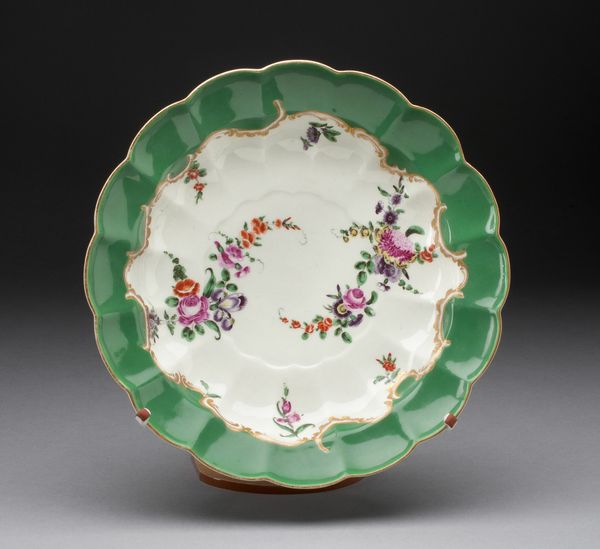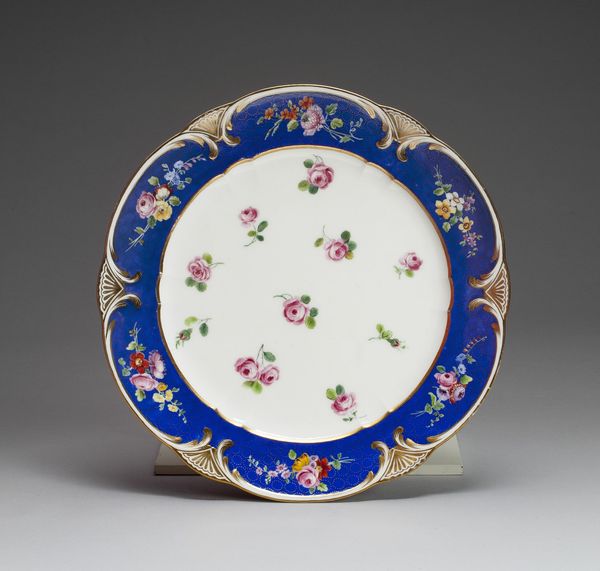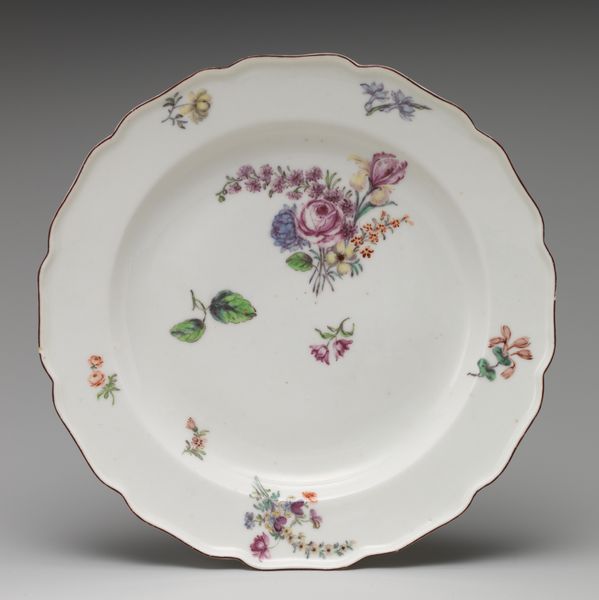
Dimensions: 21.8 × 29.2 cm (8 9/16 × 11 1/2 in.)
Copyright: Public Domain
Curator: Ah, here we have a rather lovely dessert dish crafted around 1790 by the Worcester Royal Porcelain Company. It's currently held in the collection of the Art Institute of Chicago. Editor: Immediately, what strikes me is the sheer daintiness, almost aggressively polite. I feel like I need to do a curtsy just looking at it. Is that a bit much? Curator: Not at all. Its Rococo stylings certainly evoke a world of aristocratic leisure. You'll notice the delicate floral patterns framing a central heraldic shield. Such designs acted as signifiers of wealth and family lineage. Editor: That heraldic shield does throw me, a bit of medieval sternness plunked into this riot of floral prettiness. It’s as though someone wanted to remind the guests, even while offering them cake, about their bloodline and breeding! Curator: Precisely! And note how the artisan uses a restrained palette – blues, golds, and soft pastels – to create an atmosphere of refined elegance. Editor: The fruits too… they feel allegorical, don’t they? Each carefully chosen blossom and berry seems like a tiny encoded message, as if hinting at the season’s harvest, a fleeting moment of ripeness before decay. A subtle memento mori with your dessert! Curator: Indeed. In the 18th century, dining became a highly ritualized, almost performative activity. Even seemingly innocent objects like this dessert dish were imbued with layers of meaning, from social status to philosophical contemplation. Editor: I almost wish it had a crack or two. All this immaculate surface feels... airless. A tiny flaw would lend it some humanity, whisper of past gatherings and crumbs that have since faded away. A sign of stories once shared. Curator: A fair point, though its survival in this pristine condition perhaps makes it all the more fascinating, a tangible echo of a world dedicated to beauty, refinement, and the quiet power of symbolic communication. Editor: And it reminds me that sometimes, the most innocent-looking objects can hold the most complex tales within. What appears decorative, sometimes disguises an intention or ideology waiting to be unwrapped.
Comments
No comments
Be the first to comment and join the conversation on the ultimate creative platform.
